How to Construct a Picture Book in Three Acts
I remember a workshop during my MFA program in which Lisa Jahn-Clough drew a picture book storyboard and went through the typical three-act structure. I can’t believe it has taken me upwards of six years to finally “get” it. But now I do.
I think. I hope.
Imagine a grid. Better yet, draw one. The grid has sixteen squares: Four rows of four. Each square represents a picture book spread (so, two pages, totaling 32, standard pb size). Got it? Like this super simple downloadable PDF:
If spreads are a confusing notion, draw a vertical line in each square, dividing them all in half. Maybe use a different color or draw the line so it doesn’t fully touch the edges so you don’t suddenly have 32 rectangles instead of 16 squares. Done? This now shows spreads with individual pages inside.
Act 1: Establish the story problem
Top row will have four squares (8 pages). The first square will likely include one end paper and a title page of some sort. It’s possible for the story to start on the right hand side of the first square, depending on how the book is constructed. This top row is Act 1 of your story. It needs to establish: the story problem or question, setting and characters, the hook or promise to the reader.
Example of a story problem:
In The Fantastic Fish-Sitter, Sami must babysit Frank the goldfish and keep the cute zombie kitten from eating him. Setting is Sami’s house. Character is Sami, and some others who don’t matter, and the pets. The promise: wild adventure because, hello, we have a fat zombie goldfish and a cute zombie kitten. What ELSE could happen but wild adventure? This book is fairly short in page length, about 11 spreads vs. the more typical 16, so the extra spreads are taken up with front matter and end papers. So on our grid, I’d fill in the entire first box with “stuff” and half the second box with “more stuff.” Then the story starts on the right hand side of the second box. That said, an alarmingly large number of words is taken to set up the beginning: basically just under half the words of the entire book. But… since the story doesn’t get started until those three things of Act 1 are established, the designer crammed all these words into two spreads. Not ideal, but better than having spread upon spread of “set up.” Which would be super boring and a waste of paper.
A Piece of Home takes the same number of words to set up: 200-ish in the first act, but the editor gave five spreads to the first act. This felt a little long, though none of those early pages were especially text-heavy. Incidentally, this book starts immediately in our first grid-box. In A Piece of Home, the problem is an ordinary Korean boy moving from his home in Korea to West Virginia. All characters are vital: parents, sister, grandmother, and the setting is their new home/community.
Ideally I think Act one should take 2-4 spreads (depending in part on whether that first box on your grid is made up of title page/endpapers). So if you look at the grid, the top row is devoted to Act 1.
The Middle: Act 2
Moving on, the second two rows of the grid make up Act 2. This is the dreaded MIDDLE that can save or slay a novel, and just as easily a picture book. This is where Max is sailing and hanging out with Wild Things and basically just rumpussaing his naughty little wolf-tail off.
The Middle, or Act 2 is where the main character faces the story problem and tries to solve it. Whether the problem is keeping a goldfish alive (and entertained, since babysitting is not just about your charge’s survival), acclimating to a new culture, or trying to get to grandmother’s house, here’s where the action happens. Traditionally, the character tries various ways to solve the problem, each attempt failing in one way or another.
For example in the Fish-Sitter, Sami tries building a clever Protection Zone: fail, and she tries to get the critters to play nice together: epic fail full of Scooby-Doo-worthy crashes and bangs. Likewise in our Korea-to-West-Virginia story, the main character tries to communicate with his teacher: fail, sees his sister having an even harder time adjusting, becomes envious when their grandmother goes to school with his sister but he is on his own, and moves gently toward the next act, which (foreshadowing! Or, rather, spoiler alert!) will hold the climax and resolution.
Darkness before Dawn
During grad school we looked closely at this structure and Lisa Jahn-Claugh indicated that toward the end of Act 2 there should be a “Darkest-before-dawn” moment (ok, that’s my term. She’s not so cliché). That’s to say, the attempts to reach a solution lead to worse and worse outcomes until there’s one spread which is, visually, almost totally dark (she’s an artist too). But, ok, we’re talking about the text here. I always lightly shade a couple boxes of my grid to remind me that I need to be building toward the Really Bad Stuff. Bad in a picture-book way. Like no one is getting murdered, guts splayed, but you know what I mean. It’s the moment when Max yells “Stop!” and sends the wild things off to bed without their supper. It’s the moment the fish and kitten almost demolish one another (though this story was sort of weak here). It’s the moment when a young Korean boy wishes he were brave enough to spit and bite so Grandmother would come to his classroom instead of his little sister’s.
This darkest moment is typically at the end of the third row or beginning of the fourth. And from this moment will spring…
Act 3, the finale, climax, resolution, denouement, solution, whatever.
It’s where the main character gets (or doesn’t get) what s/he wants. Where the mystery is solved (probably), the goal achieved (maybe), or the longed-for change occurs, ideally with some insight or subtle change in the protagonist.
In Fish-Sitter, spunky Sami makes Fish and Kitten play the game she wants them to play (how? I dunno. Like I said, not perfect). So the narrator returns to find her driving the pets around in her baby buggy, both with bonnets and pacifiers. It’s funny, it’s satisfying, it solves the problem (more or less). And the narrator grows in his appreciation for Sami, I guess, though maybe I’m just reading into it to fit the structure. Anyway, in A Piece of Home, time goes by. Because time is what’s necessary to acclimate to a new culture. Hee Jun learns more English, he communicates with his classmates, and he brings a Rose of Sharon to his grandmother, bridging their Korean culture with their new home. It’s also satisfying and beautiful and all the characters change as they grow to accept and value one another. Hee Jun now feels this his new home is “ordinary” (in a good way). And of course Max ignores the Wild Things’ pleas, just as his mother likely ignored his own pleas when he was sent to bed, and sails back to his room where he finds his supper waiting for him. And it’s still hot. He’s still a wild thing, but he’s in control now and ready to return to the real world.
The 3 Act structure, when done right, gives me chills. Seriously, I’m sitting here with chills all up and down my arms. Though it's January in Michigan, but whatever. The 3 Act structure provides a perfect framework for any genre of picture book, about any subject. Plus thinking of it in terms of the grid we drew together, it can help immeasurable with pacing and troubleshooting a story that just isn’t working. Are you devoting seven spreads to developing setting and character? Um, time to trim! Or does your ending fizzle out somewhere on spread six? Time to re-think your story: maybe the goal isn’t big enough, or the protagonist isn’t trying hard enough, or failing enough. Is there no “dark” spot? Maybe the protagonist needs to face a little more trouble.
Actually, now that I finish this lesson, I realize I finally, finally really, truly understand. I think I needed to type in a few picture books (yes, the whole text), marking page turns, then seeing where each act began or ended. And here it is for you. You’re welcome.

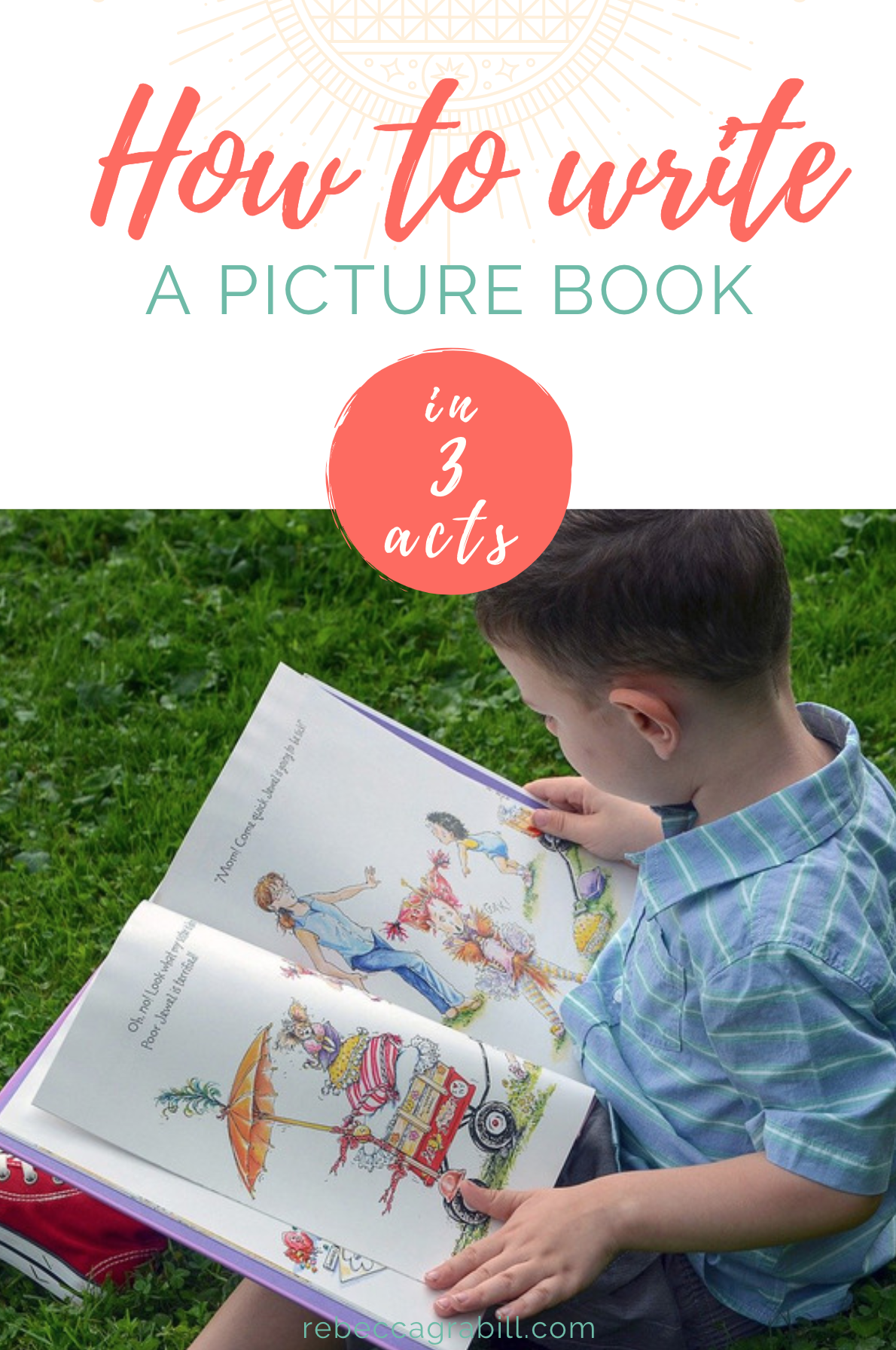






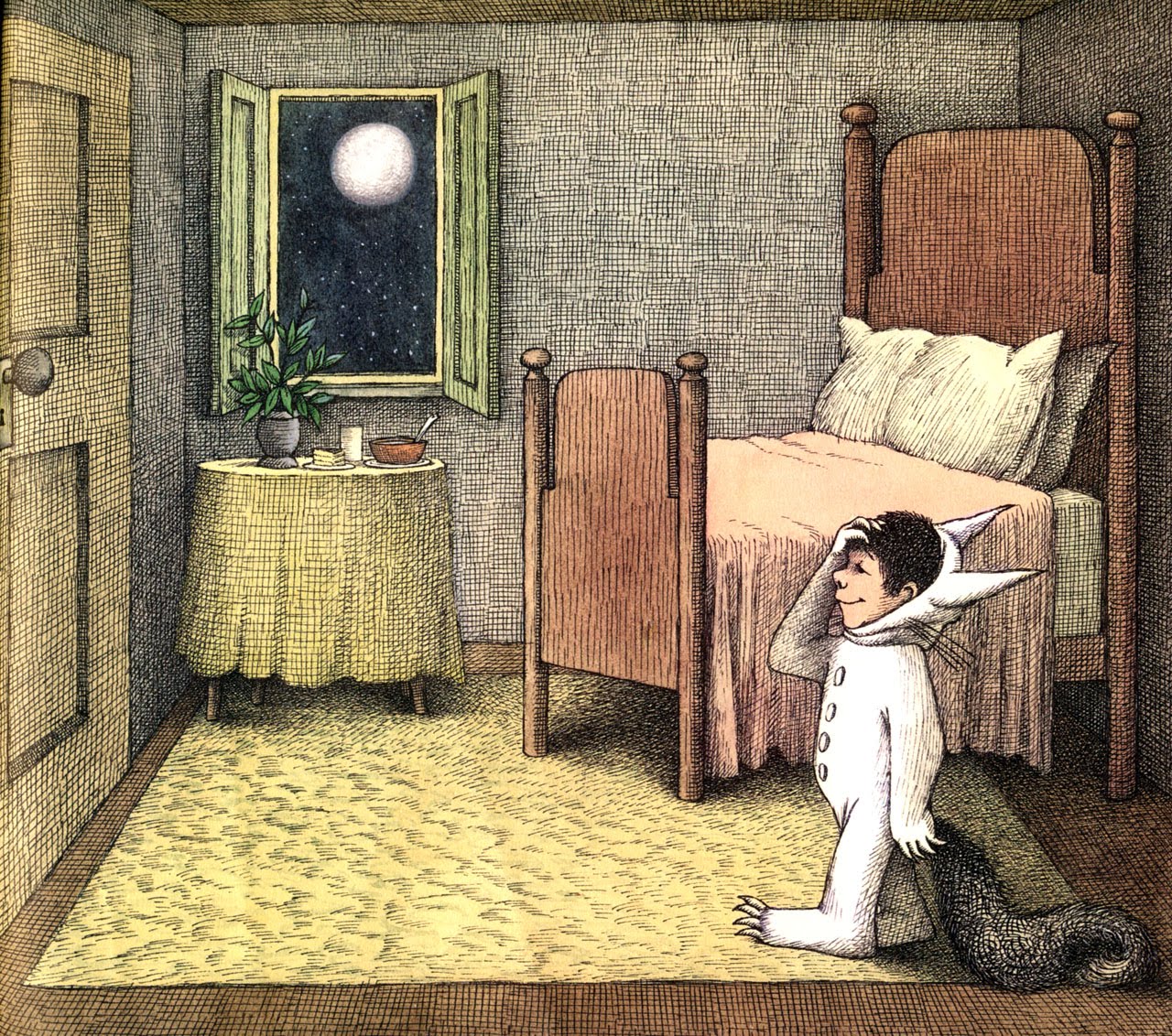
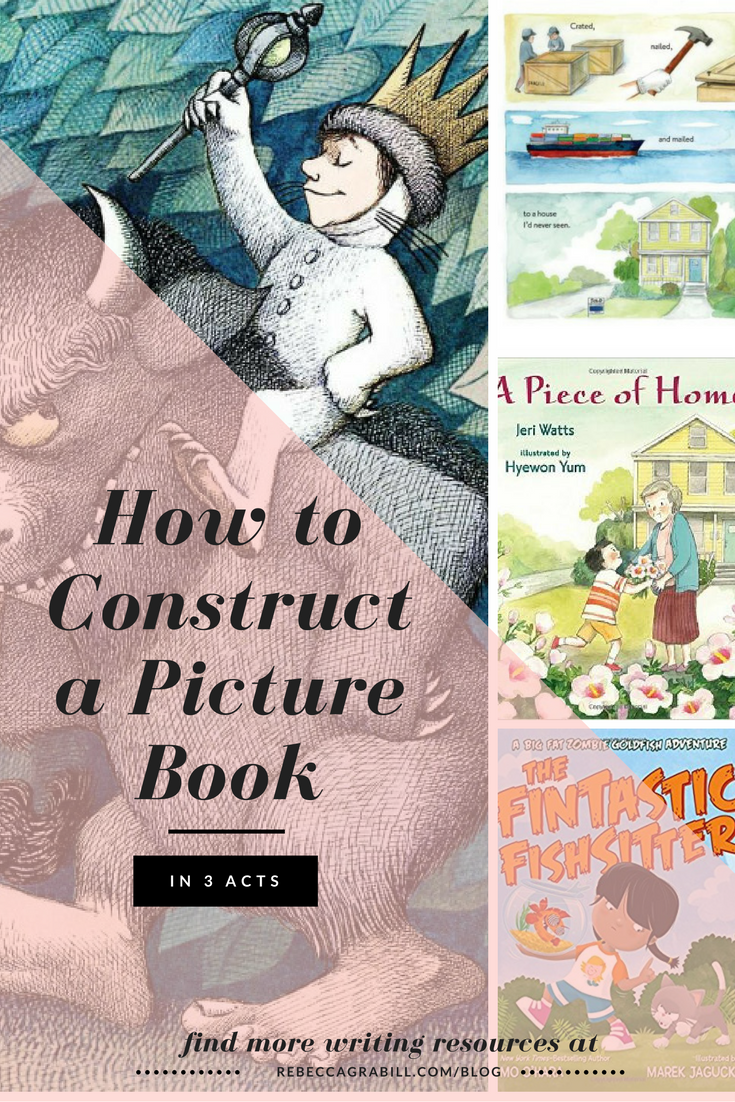
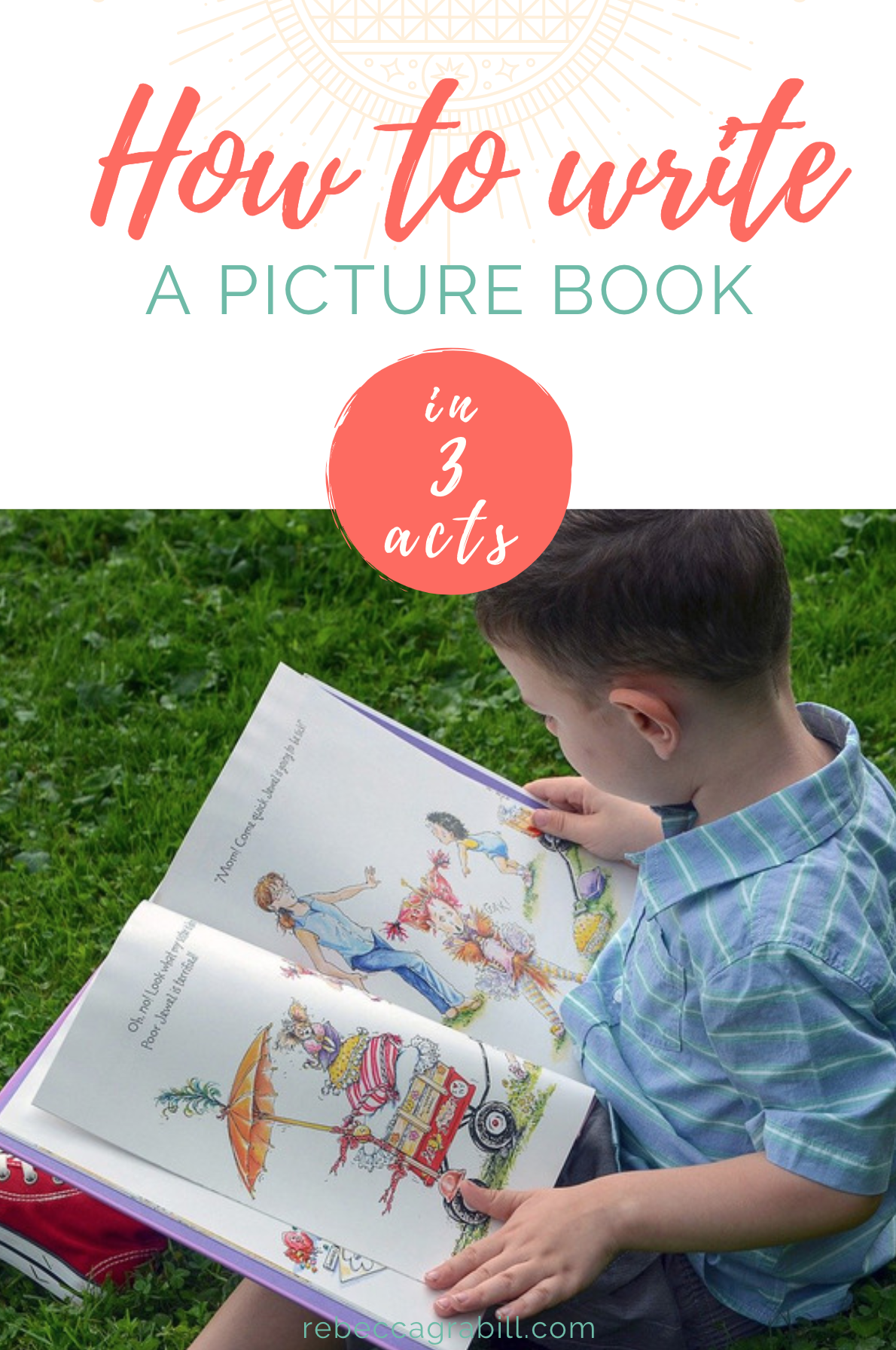
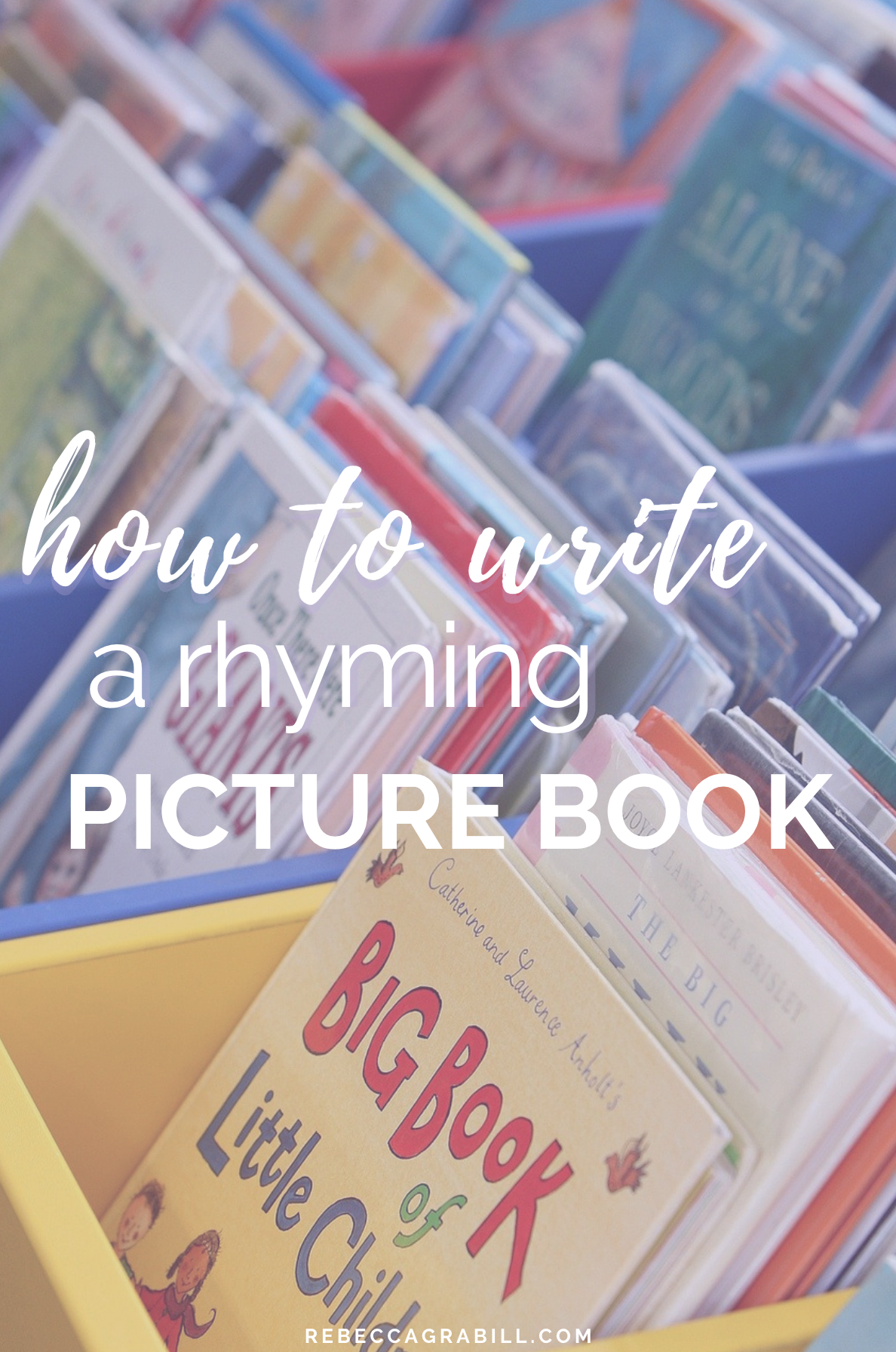
I started the first semester of graduate school knowing just a little more about picture books than I do about worms. Children love them, they come out on rainy days, and if you cut them in half, they really do die. Here I’ll share what I discovered about creating picture books with meaning and beauty.